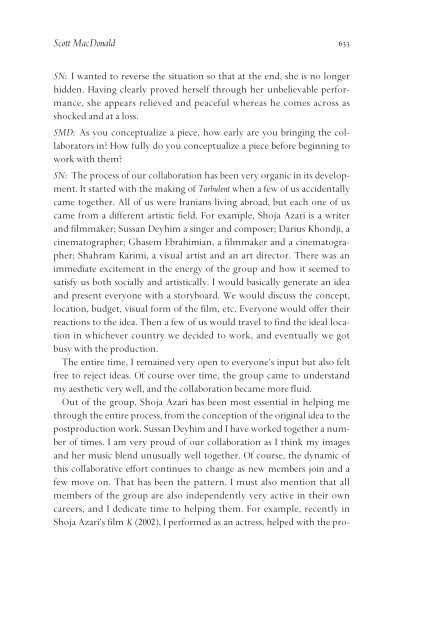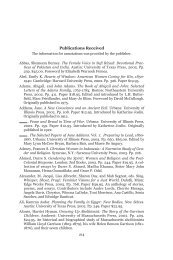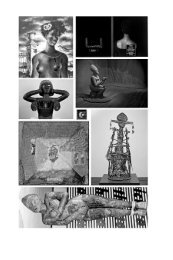An Interview with Shirin Neshat - Feminist Studies
An Interview with Shirin Neshat - Feminist Studies
An Interview with Shirin Neshat - Feminist Studies
You also want an ePaper? Increase the reach of your titles
YUMPU automatically turns print PDFs into web optimized ePapers that Google loves.
Scott MacDonald 633<br />
SN: I wanted to reverse the situation so that at the end, she is no longer<br />
hidden. Having clearly proved herself through her unbelievable performance,<br />
she appears relieved and peaceful whereas he comes across as<br />
shocked and at a loss.<br />
SMD: As you conceptualize a piece, how early are you bringing the collaborators<br />
in? How fully do you conceptualize a piece before beginning to<br />
work <strong>with</strong> them?<br />
SN: The process of our collaboration has been very organic in its development.<br />
It started <strong>with</strong> the making of Turbulent when a few of us accidentally<br />
came together. All of us were Iranians living abroad, but each one of us<br />
came from a different artistic field. For example, Shoja Azari is a writer<br />
and filmmaker; Sussan Deyhim a singer and composer; Darius Khondji, a<br />
cinematographer; Ghasem Ebrahimian, a filmmaker and a cinematographer;<br />
Shahram Karimi, a visual artist and an art director. There was an<br />
immediate excitement in the energy of the group and how it seemed to<br />
satisfy us both socially and artistically. I would basically generate an idea<br />
and present everyone <strong>with</strong> a storyboard. We would discuss the concept,<br />
location, budget, visual form of the film, etc. Everyone would offer their<br />
reactions to the idea. Then a few of us would travel to find the ideal location<br />
in whichever country we decided to work, and eventually we got<br />
busy <strong>with</strong> the production.<br />
The entire time, I remained very open to everyone’s input but also felt<br />
free to reject ideas. Of course over time, the group came to understand<br />
my aesthetic very well, and the collaboration became more fluid.<br />
Out of the group, Shoja Azari has been most essential in helping me<br />
through the entire process, from the conception of the original idea to the<br />
postproduction work. Sussan Deyhim and I have worked together a number<br />
of times. I am very proud of our collaboration as I think my images<br />
and her music blend unusually well together. Of course, the dynamic of<br />
this collaborative effort continues to change as new members join and a<br />
few move on. That has been the pattern. I must also mention that all<br />
members of the group are also independently very active in their own<br />
careers, and I dedicate time to helping them. For example, recently in<br />
Shoja Azari’s film K (2002), I performed as an actress, helped <strong>with</strong> the pro-




